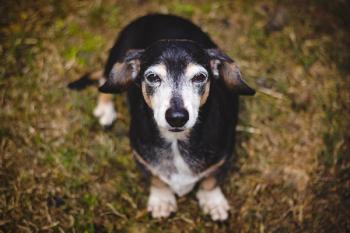
Production-based pay: An economic necessity
Our immediate future is about 80 watts short of bright.
Our immediate future is about 80 watts short of bright. Veterinary transactions are down in most of the country, and payroll dollars are nearing the endangered-species level. For many practice owners, some of the toughest decisions of their careers are looming.
Like many companies, layoffs probably are inevitable. It's a depressing prospect, because veterinary hospitals are family environments. Owners bend over backward to take care of the personal needs of their small cadre of workers. Unlike other industries, we just can't seem to get rid of poorer performers when we need to because we don't want to add to their problems.
Another fear is that any good associates we had to let go will be hard to replace when things finally do turn around. But procrastination often will drain a practice's resources to the extent that loyal practice owners may not have a practice to need layoffs. The economy isn't likely to turn around in the near future, but even worsen before that happens.
I monitor some 40 practices on a monthly basis, and I see it all. Some in very affluent areas are growing, even in this downward spiraling economy, but others, despite sterling facilities and staff, just aren't making ends meet. Fewer clients are coming in, and those who do, more often than not, opt for the least services that will get them by. Consequently, average transactions are flat or falling.
For a practice to keep afloat, professional and paraprofessional salaries before benefits cannot exceed 45 percent of revenues. (Taxes are not benefits; insurance and vacations are.)
The pressure-relief valve, unfortunately, is associates.
A practice needs a minimum of 12 outpatient examinations per veterinarian per day. A four-doctor practice averaging 10 or fewer per day per DVM needs to adjust either the professional payroll or the number of associates, and the slack needs to be taken up by those who remain.
The practice with four doctors each seeing nine patients per day is endangered. Three doctors seeing 12 patients per day is not. I don't know if you find this depressing yet, but I certainly do. However, straight talk is what is needed today. This year and 2010 may be the worst years for veterinary medicine in my lifetime.
For 200 years, every decade provided more clients than the last as our country grew and prospered. Now, our rate of population growth, referred to as the average annual percent change, is projected to decrease during the next six decades by about 50 percent, from 1.10 percent between 1990 and 1995 to 0.54 between 2040 and 2050. That is due mostly to the aging of the population and, consequently, a dramatic increase in the number of deaths.
Why production pay?
Most practices with declining transactions can no longer afford to pay their associates at pre-recession levels. The first step in reducing payroll and at the same time probably increasing personal productivity is to switch associates from straight salary to production-based salary. What other choice is there to avoid contract non-renewal?
The tables are turned. Yesterday, failure to pay an associate a fair percentage of gross production was an invitation for that associate to leave your practice for greener pastures and compete with you. Never believe that a covenant not to compete will ever stop associates migrating to entrepeneurship. But today, banks are not so ready to provide capital for that move.
Production-based compensation can transform a practice, making entrepreneurs of talented associates within your own practice.
The percentage that you put into the contract terms depends on many factors, which we'll discuss next month in Part 2.
Dr. Snyder, a well-known consultant, publishes Veterinary Productivity, a newsletter for practice productivity. He can be reached at 112 Harmon Cove Towers Secaucus, NJ 07094; (800) 292-7995;
Newsletter
From exam room tips to practice management insights, get trusted veterinary news delivered straight to your inbox—subscribe to dvm360.






